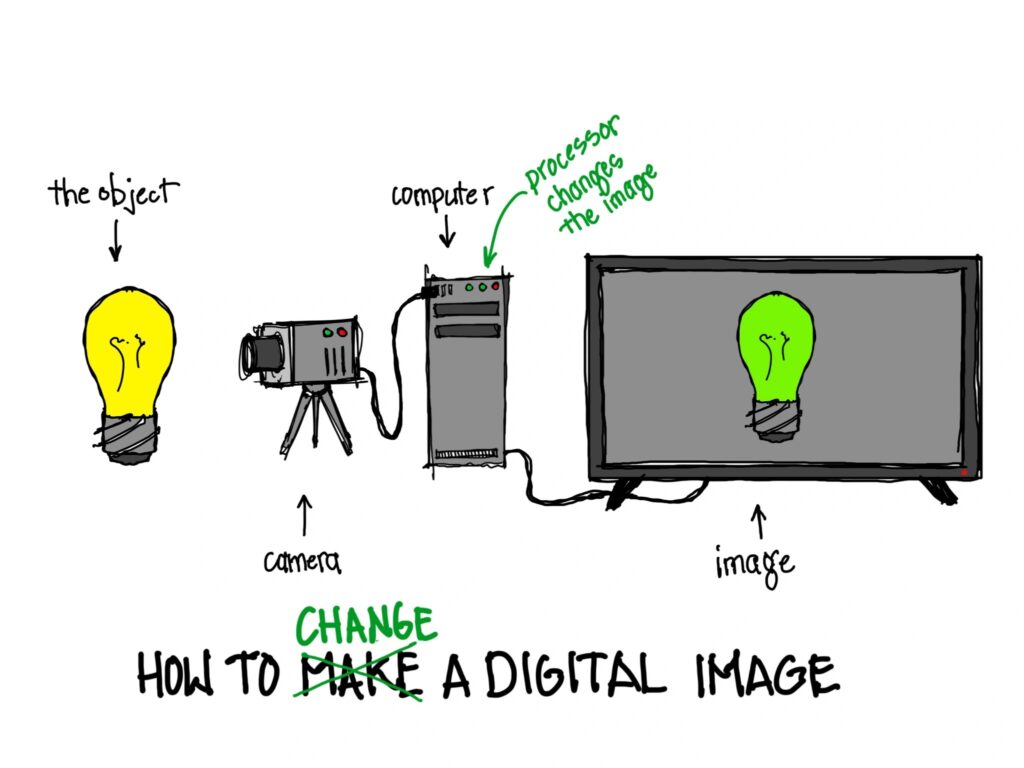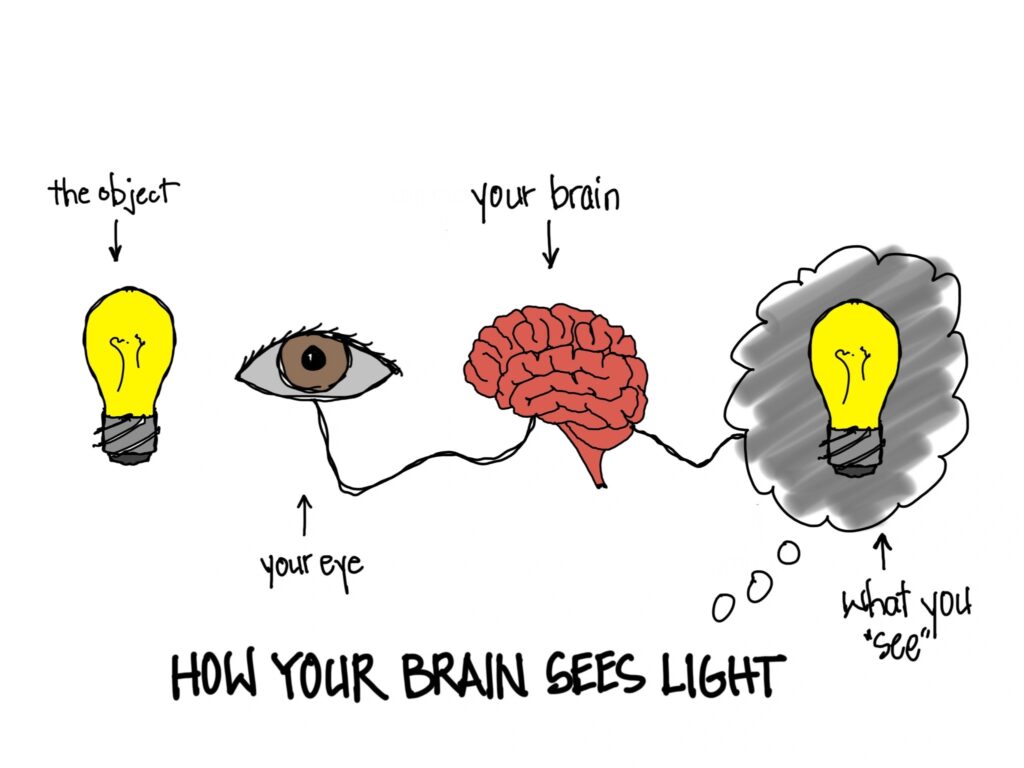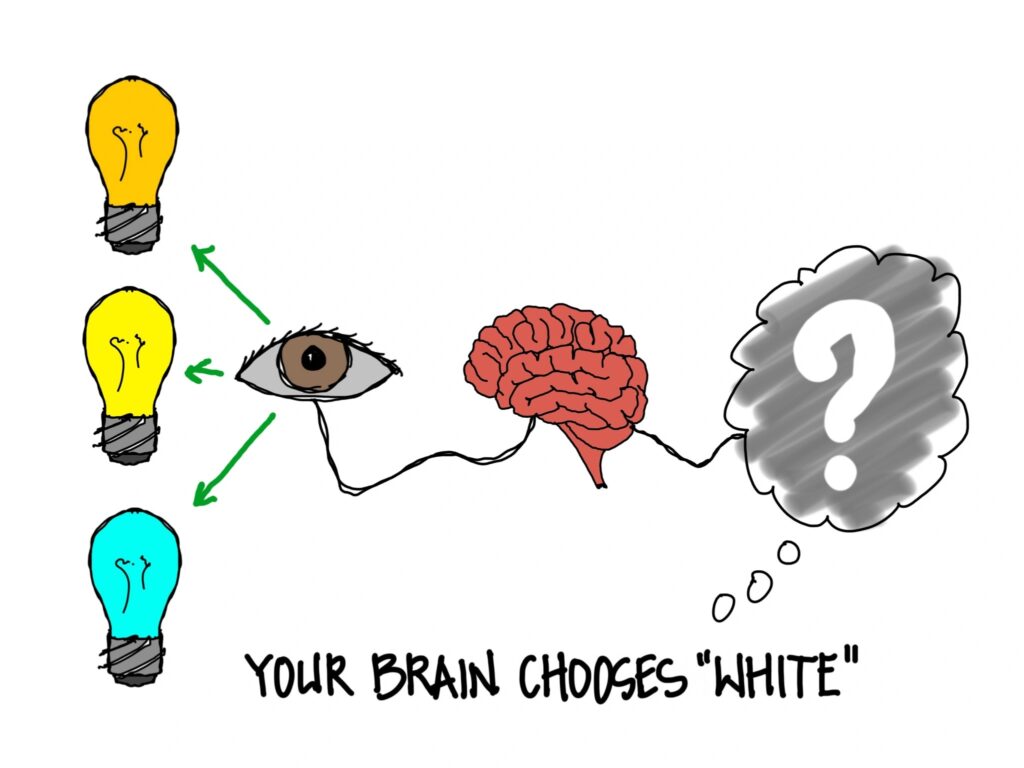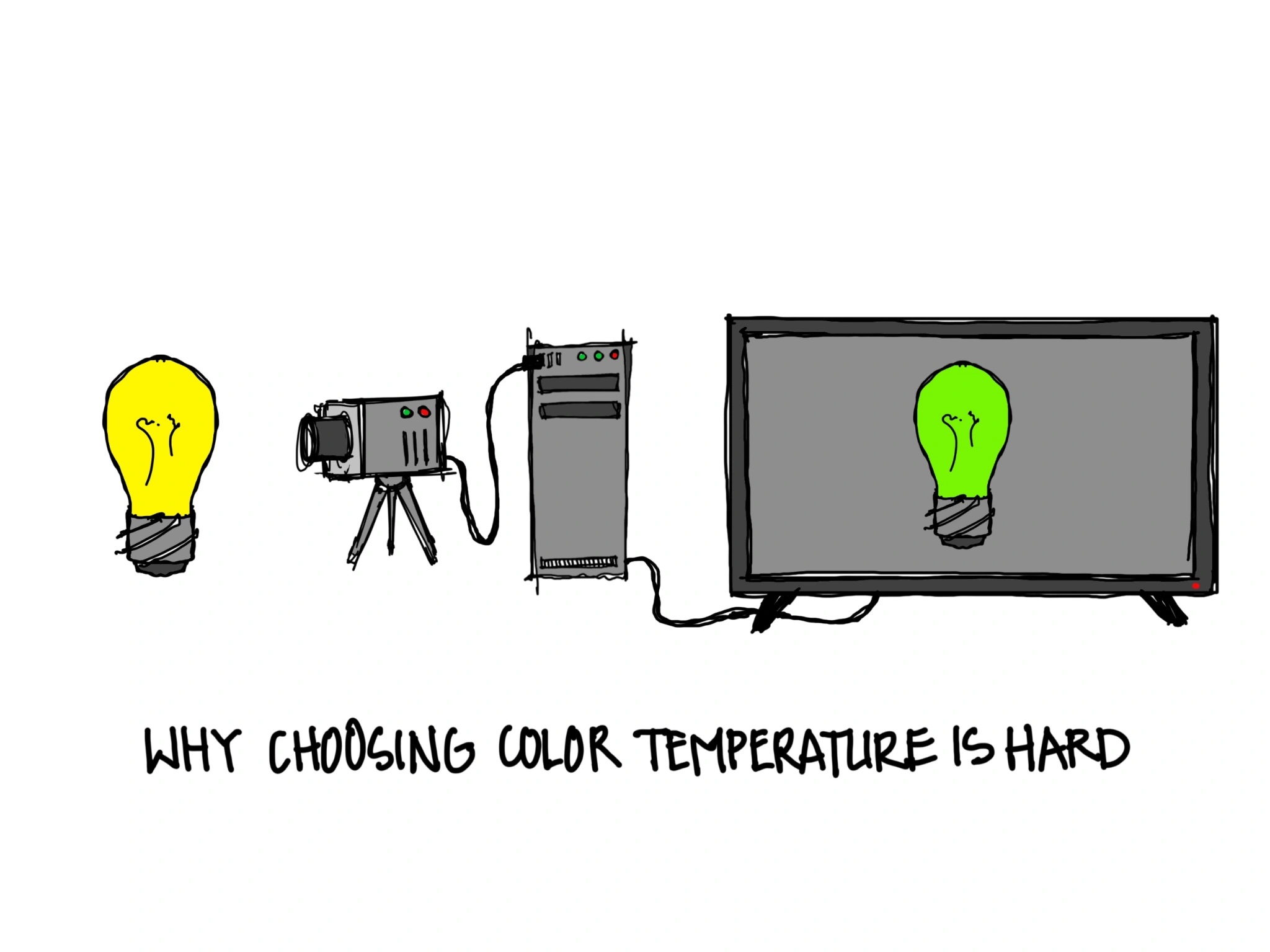A few years ago I wrote a pulp piece for Houzz.com on how to choose the “right” color temperature of light. At the time there were just a few choices homeowners faced with lighting: choose 2700°K warm white, 3000°K not-quite-as-warm light, or perhaps 3500°K “neutral” white or 4000°K cool light. I recommended 2700°K for traditional homes with lots of warm woods and fabrics, 3000°K for traditional or modern homes with more neutral, cool, or gray tones. 3500°K was reserved for more modern homes with lots of daylight (think Southern California) and 4000°K was, well, banished to the lighting hinterlands.
That was then. Today we have more options and that makes choosing a color temperature a more difficult question, one that cannot be fully answered without understanding how our lovely brains mess it all up. And once again I’ll try an analogy to help explain my thinking.

To choose the right color temperature of white light we first need to understand how we perceive white light. In the sketch above I simplify the “signal path” for video production. There is an object, in this case a light bulb, that is picked up by sensors in a camera. The camera then sends electrical signals to the computer, which in turns reassembles the digital signals into a pattern we might call an image. Finally, the computer displays that image on the screen or monitor.

Here’s where it gets fun. By changing a tiny bit of code in the computer, I can make the light bulb look different on the screen. Call it photoshopping, image processing, editing, or whatever you like, but the sketch above is meant to illustrate a simple concept: what is seen on the monitor is influenced by both the original object itself and the computer’s internal processing code.
This is the way our own visual system works, to a certain extent.

Here you can see a parallel diagram of our own visual system. The object stays the same, but the camera is replaced by our eye (both are identical in function as light-sensors). Our brain provides the processing power of the computer, and in our minds eye we “see” the object just like we do on a computer monitor.

And, just like with digital video production, our central processor (the brain) can change the way we see something. Our brain takes in the electrical signals from the sensors in our eyes and translates it into what we “see.”
Why is this important? Because the “right” color of white light depends on what our brain sees, not our eyes. This is difficult to explain with words and almost impossible to understand without a controlled light lab and test equipment. But I’ll give it a whirl.
Our brains have an internal function you could call “white balance” that constantly evaluates all the incoming visual imagery to identify “white.” Once our brain decides which of the many incoming signals is “white,” our brain will white balance and shift our perception of everything else. In other words, white light is relative to what is around it.
That means that 2700°K will look white at night when there are no other light sources around. But if I add in a 3000°K light source to the mix, my brain will then choose one or the other to be white light. If my brain chooses 3000°K as white, then 2700°K will look yellow.
If I remove the 3000°K source and add in 4000°K “cool” white light alongside the 2700°K “warm” white, my brain will again process the information, choose white, and adjust my perception accordingly. If my brain chooses 2700°K as white, the 4000°K will then look blue. If my brain chooses 4000°K as white, it will loose its blue hue and the 2700°K will start to look yellow.
In short, the “right” color of white light is always changing. We create problems for ourselves when we choose one color of white light that never changes, never adapts. We’re stuck with light that looks too yellow in the daytime or too blue at night. Our brain can’t ignore the cool daylight coming in through the windows, nor can it ignore the warm glow of a sunset.

If you don’t believe me, ask one of the recent graduates of the ProSource Lighting Technology Certification level 2 training events we held in Dallas. Ask them if “warm” and “cool” are relative concepts. Ask them if their brains white balanced to make them feel just as comfortable under 5000°K light as 2700°K.
What is the practical application of this knowledge? Single-color white light in a fixed color temperature will be changed constantly by our brains. Therefore, the only way to pick the “right” color temperature is to pick ALL of them. The only way to get “true white” light is to pick light that can be changed from moment to moment. We talk about this as tunable white, wide-range tunable white, or dynamic white technology.
What is the right color temperature for electric light? All of them.
